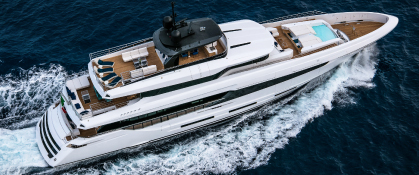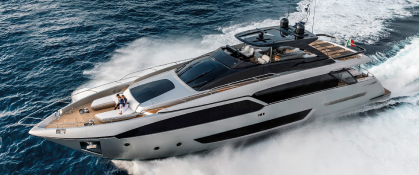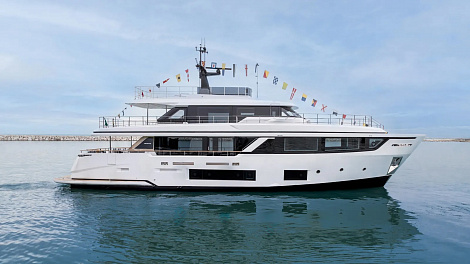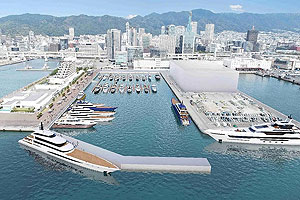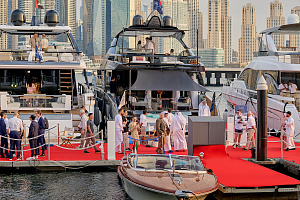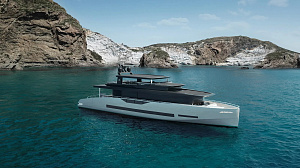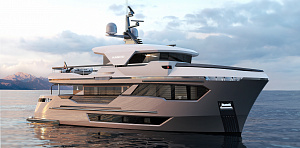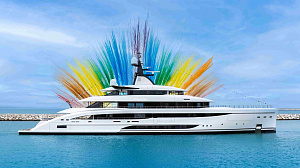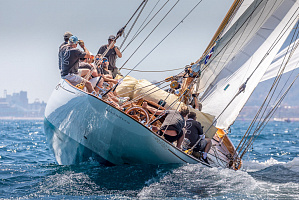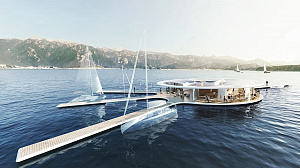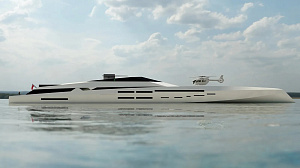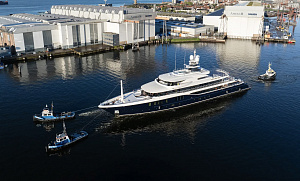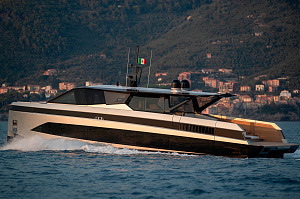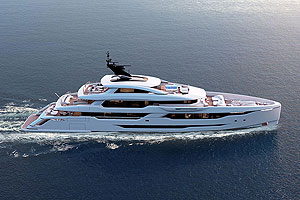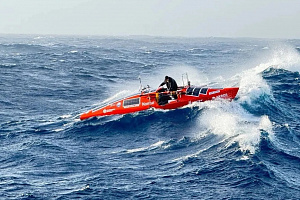





Superyachts and Formula 1 share more than just the staggering number of zeros on their price tags and the prominent role of champagne in their celebrations. Both represent a kind of Everest—an ultimate peak that many aspire to conquer, but only a select few ever do. Adrian Newey has reached the summit of both. Widely regarded as one of the most successful engineers in Formula 1 history, the Englishman has decided to finally step back from racing and focus on his passion for sailing. At this very moment, the Oyster shipyard is building a 27-meter sailing yacht commissioned by Newey himself. Naturally, as a brilliant designer, he couldn’t resist contributing to its creation.
“I’ve always been fascinated by yachts, especially sailing yachts,” Newey shares in a documentary film produced by Oyster to mark the occasion. “I love the purity of sailing, the idea that nature itself provides the power. And now, I finally have the time to dedicate myself to it.”
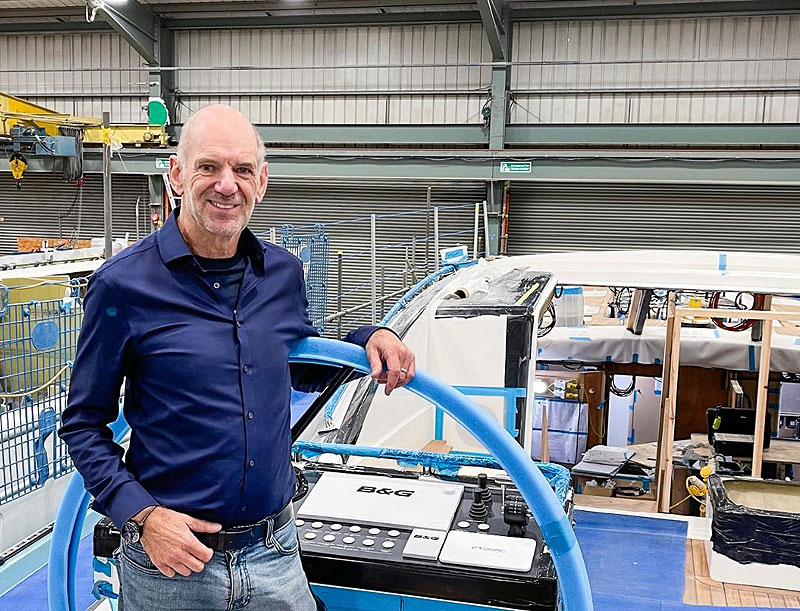
Who is Adrian Newey?
Adrian Newey, who has spent over 40 years in Formula 1, is regarded as the greatest engineer in the history of motorsport. The racing cars he designed have won 13 Drivers’ Championships and 12 Constructors’ Championships across three teams. Rumor has it that his annual salary is around £15 million, and every top F1 team dreams of having him on their roster.
Aston Martin owner Lawrence Stroll once said, “I think Adrian is a unicorn. He’s truly special. People like him come along maybe once in a lifetime.”
Newey’s passion for cars began at an early age. In a podcast interview with Beyond the Grid last year, he shared that by the age of 11, he had welded 12 scale models of cars out of metal. He quickly grew bored of copying existing designs and began creating his own. “Of course, I had no idea what I was doing, but sketching and turning those drawings into three-dimensional objects gave me great practice,” he recalls.

Newey entered Formula 1 in 1983 and joined the top team Williams in the early 1990s under the leadership of Patrick Head. His active suspension car design helped Nigel Mansell secure the 1992 Drivers’ Championship. Over the next few years, the car evolved, with improved handling and downforce allowing Alain Prost, known as “The Professor,” to win the 1993 title, while Williams claimed five Constructors’ Championships between 1992 and 1997.
At the end of the decade, Newey moved to McLaren, where he designed the MP4/13, the car that Mika Häkkinen drove to his first of two World Championships.
Since 2006, Newey has worked at Red Bull Racing. His RB19 car for the 2023 season delivered Max Verstappen his third title, winning an astounding 21 out of 23 races that year.
Despite the technological leaps in Formula 1 over the past 40 years, Newey prefers to sketch and draft designs by hand rather than using CAD software, saying it gives him a greater sense of creative freedom.
.jpg)
In addition to Formula 1 cars, Newey also designed the Aston Martin Valkyrie—a hypercar with race-derived technology that’s road-legal. Production was limited to 150 units, with each costing between £2.5 and £3 million. He also created the Red Bull Racing RB17, a track-only hypercar with a 1,000-horsepower engine capable of revving up to 15,000 rpm. It can lap a circuit as quickly as a Formula 1 car. Red Bull plans to build 50 units of the RB17, priced at approximately $6.3 million each.
What Do the Oyster 885 and a Formula 1 Car Have in Common?
At first glance, a racing car roaring at over 300 km/h and a sailing yacht gliding silently across the water couldn’t be more different. But they’re not as far apart as they seem. Both are highly complex technical systems where nothing is left to chance. Both rely on advanced composite materials and a relentless focus on weight optimization. In both cases, reliability is paramount. And whether it’s a yacht or a Formula 1 car, each is a masterpiece of design in its own right.

“We build yachts designed for long journeys and engineered to be a home away from home, capable of withstanding the impact of waves in the middle of a raging Pacific Ocean,” says Oyster project manager Matthew Townsend.
The Oyster 885, designed by sailing legend Rob Humphreys, was the first Oyster yacht to undergo extensive testing in a water tank to optimize the shape of its hull, keel, and rudders. The extra effort and expense paid off: everyone who has sailed the yacht agrees that it handles beautifully, whether sailing upwind or downwind.
Mike Owen, from Europe’s largest sailing magazine Yacht, wrote: “The Oyster 885’s upwind performance is incredible for a yacht of this size and purpose. We managed to hold a steady course at 25° to the wind! The yacht felt lively, with excellent feedback at the helm, yet remained steady on following seas.”
.jpg)
The well-balanced, highly efficient hull with twin rudders ensures both safety and exceptional performance. The wide stern enhances stability, while the carbon mast with four sets of spreaders is positioned forward to increase the mainsail area and reduce the size of the headsail. This configuration makes tacking easier and is more effective in rough seas.
The Oyster 885 is available with either a fixed keel or a retractable centerboard, which reduces the draft to 2.3 meters—perfect for getting close to shore or navigating river mouths.
The deck is minimalist in design. Folding cleats and fairleads are mounted on the bulwark rather than the deck itself. Flush hatches and teak planks, joined seamlessly, create a sense of infinity, visually enlarging the already spacious area. The bow features a cradle for a tender, which can be launched and retrieved using a spinnaker boom.
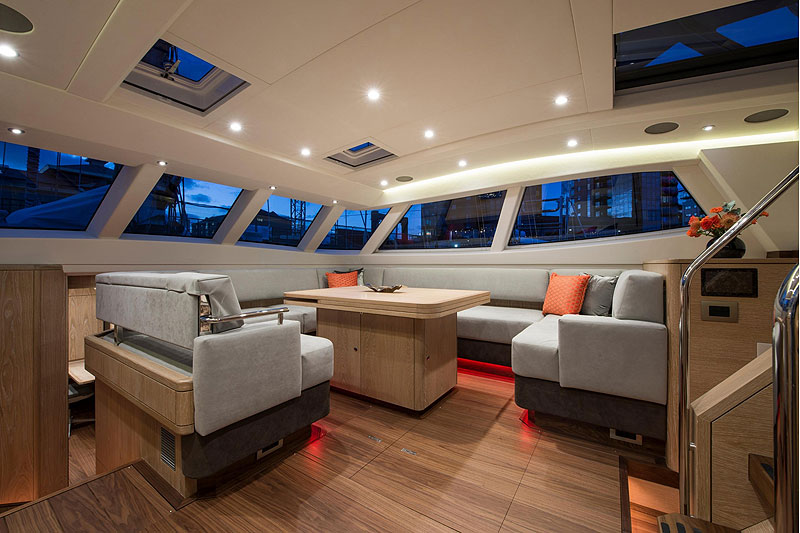
The spacious split cockpit provides plenty of room for relaxing and dining outdoors. It is protected by a large bimini with a sprayhood and can seat up to eight people around a folding dining table. The tender garage can also be transformed into a private chill-out area with its own bimini.
Below deck, the yacht features four guest cabins and a crew area with a convenient walkthrough galley leading to two crew cabins.
Adrian Newey’s Custom Oyster 885
Adrian Newey’s yacht stands apart from other Oyster 885s. “The beauty of racing cars is that only two things matter: speed and reliability,” says Newey. “Building a sailing yacht for long journeys and life on board involves far more considerations. I wanted a yacht that was seaworthy, very comfortable, and capable of long voyages, possibly even a circumnavigation. The Oyster 885 comes with either a standard saloon or a raised saloon. I chose the latter because I wanted the yacht to feel spacious and bright. The panoramic ocean views from the raised saloon give a sense of freedom that completely captivated me.”
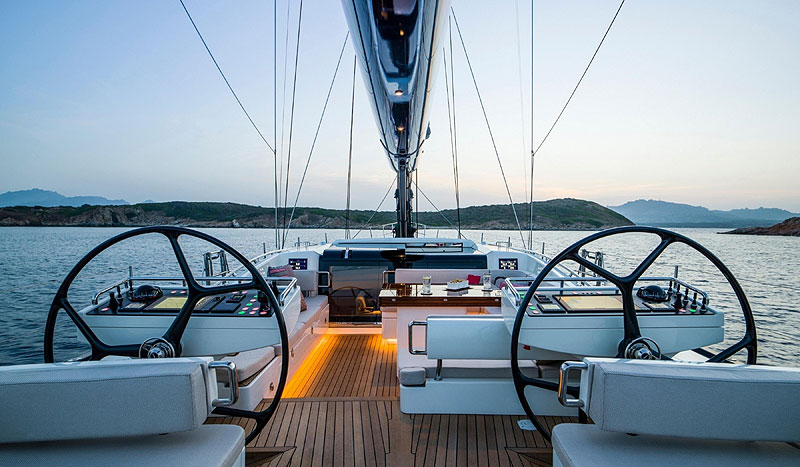
Newey made three changes to the standard Oyster 885 specifications: one aesthetic and two technical upgrades aimed at enhancing comfort.
“First, we did a light restyling of the interior, tweaking the wood finishes, colors, and furniture details,” explains Newey. “Second, we increased the size of the swim platform by 50%. Now there’s enough space to dine by the water with up to four people. The third change was driven by our desire to minimize generator use. We installed a hardtop over the cockpit with about 22 square meters of solar panels. This allows us to maximize solar energy for powering the yacht’s systems, reducing dependence on generators.”
The swim platform, when lowered, isn’t rigidly fixed but moves with the waves to absorb impacts. It also features automatic handrails and a ladder for easy access.
Currently, Newey’s yacht is about three-quarters complete and is expected to be delivered this year. The name of the yacht remains a mystery. In an interview with Boat International during the Monaco Grand Prix, Newey admitted that saying goodbye to the world of motorsport wasn’t easy, and he spent a long time deciding whether to stay with Red Bull Racing or sail off into the sunset aboard his new Oyster.
